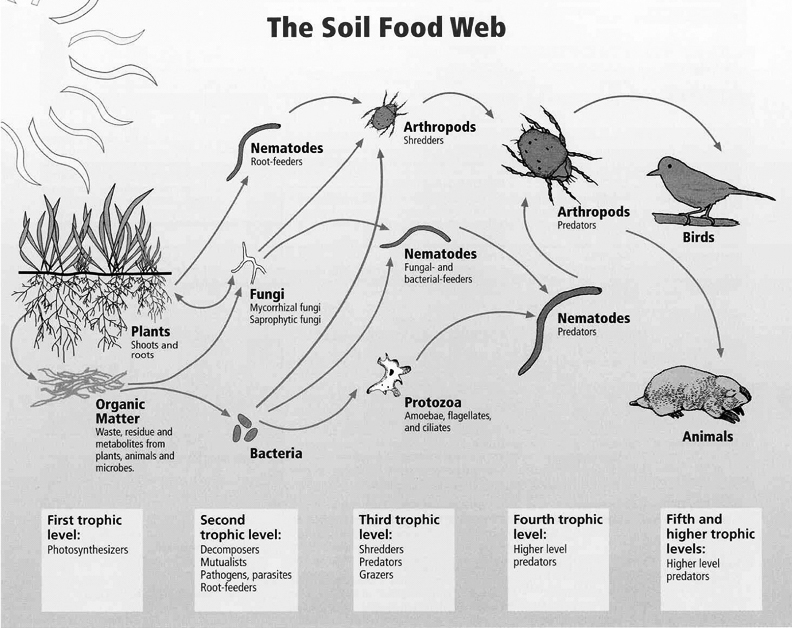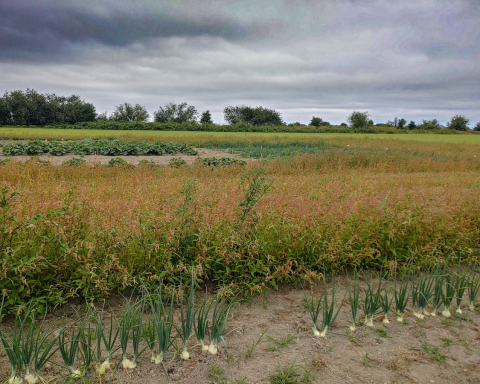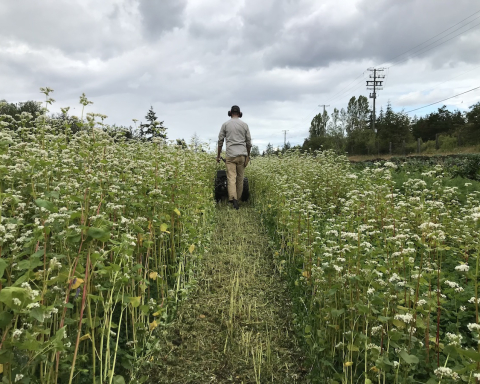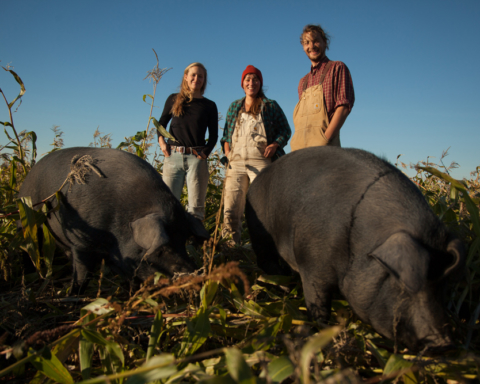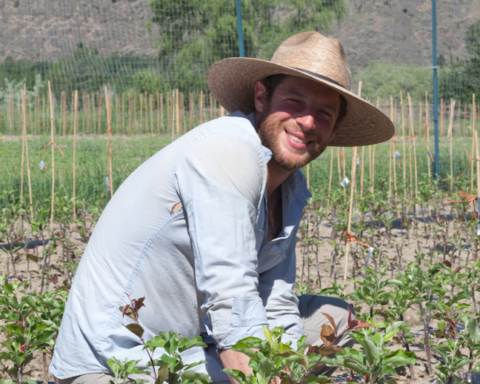Emma Holmes, Organics Specialist, BC Ministry of Agriculture
Studies examining soil microbes are showing huge potential to improve growing practices. A number of soil microorganisms have abilities to increase soil fertility, aid in nutrient and water uptake by the root system, and protect crops against pests and disease.
Soil Bio-fertilizers
If you grow legumes, you are likely already familiar with Rhizobia, the family of soil bacteria that form symbiotic relationships with legumes to convert atmospheric nitrogen to a form of nitrogen that is plant available. Producers have been inoculating their legume seeds with rhizobium since the ‘50s and it is estimated that 70 million tonnes of N are fixed annually by Rhizobia (Zahran, 1999). There are significant potential gains to be had from reducing dependence on nitrogenous fertilizers by increasing biological nitrogen fixation including reduced input costs, pollution prevention, and improved yield and crop quantity (Kelly et al., 2016).
But it is not just legume crops that see big returns in partnering with soil organisms. Farmers around the world are using bio-fertilizers to cut back on expensive fertilizers, build their soil quality, and better protect their waterways and aquifers.
There are six main types of biofertilizers:
Symbiotic Nitrogen Fixers (e.g. Rhizobium) form nodules on the roots of legumes and can fix 50-200 kgs N/ha in one crop season.
Asymbiotic Free Nitrogen Fixers (e.g. Azobacter) live in the soil and fix significant levels of nitrogen without the direct interaction of other organisms.
Associative Symbiotic Nitrogen Fixers (e.g. Azospirillum) form close relationships with grasses and can fix 20-40 kgs N/ha.
Phosphate solubilizing bacteria (e.g. Fusarium) convert non available inorganic phosphorus into a plant available form.
Algae biofertilizers (e.g. Cyanobacteria) can provide plants with growth promoting substances (ex. Vitamin B 12) and fix 20-30 Kgs N/ha.
Mycorrhizal fungi refers to the symbiotic association between plant roots and soil fungus that enhances plant soil and nutrient uptake.
Growers in the Fraser Valley have reported that using a bio-fertilizer has allowed them to reduce their N fertilizer application by as much as 30-40% while seeing similar yields and higher product quality. The bio-fertilizer is called TwinN, a freeze dried microbial product that contains a group of asymbiotic free nitrogen fixing bacteria called diazotrophs. Along with N fixation, the diazotophs in TwinN have also been shown to increase root growth and root hair density and decrease root infection. It is thought that the colonization of the plant with beneficial bacteria protects the host plant from harmful bacteria (similar to the use of probiotics to promote human health).
Soil FoodWeb
Dr. Elaine Ingham, a soil microbiologist who previously worked with at Oregon State University and the Rodale Institute, is now the president of Soil FoodWeb. She has dedicated her career to help producers grow crops better by directly observing and promoting life in the soil.
Soil FoodWeb features comprehensive guides and online courses on making compost tea and analyzing soil samples using a microscope. Commercial growers using the Soil FoodWeb management programs report substantial savings in crop production input costs, reduced water usage, and increases in yield and quality.
Korean Natural Farming (KNF)
Koran Natural Farming looks very holistically at the entire farm system, including the people in it, and uses inputs that are generally close at hand and relatively inexpensive. Unlike bio-fertilizers, which involve bringing in microbes from another region or lab, KNF focuses on fostering beneficial Indigenous Micro-Organisms (IMO) within the ecosystem in which the crops are grown.
For more information, check out this link to a video on KNF Indigenous Micro-Organisms: https://vimeo.com/35078856
RootShoot in Vancouver provides 2-day workshops on KNF that includes a detailed explanation of the actual making of inputs including indigenous microorganisms, fermented plant juice, fish amino acid, and lactic acid bacteria.
Measuring Soil Diversity
The Plant Health Laboratory in Abbotsford can conduct a nematode assessment for $16-$32 (depending on turn around time). Nematodes are used as biological indicators of soil health because the number and types present in a soil reflect changes in the microbes they consume, and the soil’s physical and chemical environment.
Independent Soil FoodWeb consultants can analyze bacteria, nematodes, protozoa, and fungi using microscopes.
Managing for Soil Diversity
As the complexity of the food web increases, productivity of the soil tends to increase. Strategies for supporting robust soil biology include:
- Supply organic matter, which acts as a home and food source for soil microbes. Composts and manures can also provide an input of beneficial soil microbes.
- Leave crop residue to break down in place. Surface residue encourages decomposers and increases food web complexity.
- Plant winter cover crops to act as a food source for bacteria in a time when food is otherwise scarce.
- Create a diverse landscape that supports diverse niches of life.
- Reduce tillage, which can disrupt sensitive organisms such as fungi. Over the long-term, tillage can deplete soil organic matter and thus reduce soil activity and complexity.
- Minimize the use of fertilizers and pesticides. Even organic products can reduce the populations of fungi, nematodes, protozoa, and bacteria.
- Minimize fallow periods, which can result in starvation for many creatures in the soil food web.
- Minimize compaction and improve drainage to support aerobic microbial populations.
- Cultivate beneficial indigenous micro-organisms
- Apply compost teas and/or bio-fertilizers.
Emma Holmes has a B.SC in Sustainable Agriculture and M.Sc in Soil Science, both from UBC. She farmed on Orcas Island and Salt Spring Island and is now the Organics Industry Specialist at the BC Ministry of Agriculture.
Emma.Holmes@gov.bc.ca
References:
Kelly, et al., (2016). Symbiotic Nitrogen Fixation and the Challenges to its Extension to Nonlegumes. Applied and Environmental Microbiology, 82(13). Retrieved from: http://aem.asm.org/content/82/13/3698.full
Zahran, H.H. (1999). Rhizobium-Legume Symbioses and Nitrogen Fixation under Severe Conditions and in an Arid Climate. Microbiology and Molecular Biology Reviews, 63(4). Retrieved from: https://www.ncbi.nlm.ih.gov/pmc/articles/PMC98982/


